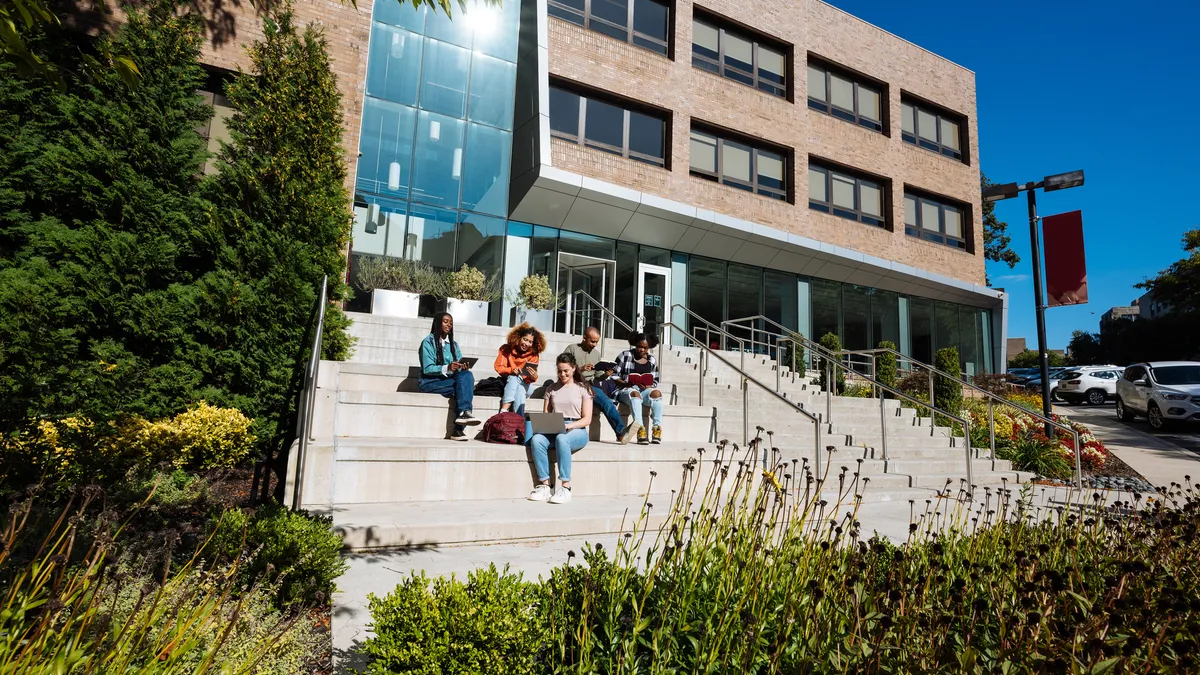Ricardo Azziz has held numerous executive positions in higher education and led the merger that resulted in Georgia Regents University, now Augusta University. He is principal at Strategic Partnerships in Higher Education Consulting Group.
He writes the regular Merger Watch opinion series on corporate restructuring in higher education.

There are generally three forms of major organizational and corporate transformation in higher education — what we often call “Big Scary Change.”
They are mergers (which include what some may term "consolidations" or "acquisitions," depending on point of view), closures, and corporate conversions (for-profit to nonprofit and vice versa). In a recent widely read op-ed, biology professor Jim Murphy asks the question: "Is a merger a closure by another name?" Murphy works at Bloomfield College, a small nonprofit in New Jersey that is merging with Montclair State University.
He highlights the importance of mission alignment when institutions are merging. Murphy also notes that ensuring such an alignment requires consistent transparency throughout the merger process, preservation of the policies that make up Bloomfield’s identity, and the need to ensure a stable, experienced faculty body, especially by retaining Bloomfield’s faculty.
While all these statements are thoughtfully made, the real question should be, “Is it better to merge than to close?”
It's an important question because institutional closure is not a remote possibility, as some members of our community would prefer to believe. In fact, as I have noted previously, so far 15% of all degree-granting colleges have closed in the past decade. No, closure is a real possibility for many small private colleges such as Bloomfield.
Higher education has a myriad of stakeholders — many more than other industries. What they need to recognize is that a merger is better than closure. No matter what. Because a merger is not about the faculty, or the administrators, or even the alumni or the local community, although they are all important constituents.
What trumps all are the students. While our institutions may be machines of research or discovery, or economic engines for their communities, or preferred employers, or agents of diversity and social justice, or the repository of alumni memories, they are — above all — institutions that serve to educate and train students.
So, let's reframe the question: “For students, is it better to merge than to close?” The clear answer is, “Yes.”
As data from the National Student Clearinghouse Research Center and State Higher Education Executive Officers Association shows, more than 50% of students discontinue their education when their college closes — even more so when their institution closes abruptly. And unfortunately, closures more frequently impact colleges that enroll a greater proportion of vulnerable students — those of color or with exceptional financial needs, such as those receiving Pell Grants.
As somebody who advises many institutions and leaders in this arena, it always surprises me how little many of the stakeholders involved are willing to compromise — even to the point of risking closure. Board members and executives alike want to find a (preferably well-endowed) merger partner who would allow them to retain their board, their name, their mission, their endowment, their faculty, their staff, their curricula, their policies, and so on. Essentially, let them stay the same but provide them with new funding.
However, a merger is about compromise and flexibility. Flexibility and concession on all sides, but, realistically, more so on the side of the institution in greatest need.
Undoubtedly, all parties in a merger want something out of the transaction. Faculty want employment security, better salaries, less teaching load and greater opportunities for tenure. Staff want job security, better pay and greater recognition. Boards want to remain influential and relevant. Alumni want to feel they still have a home they can recognize. Executives want to remain, well, executive.
But the party that has the greatest need is the students. They need the opportunity to continue their education in an unfettered manner.
It is true that students, as they transition to a new merged environment, will need additional support and assistance. And it is also true that many of them may be less prepared to be part of a larger institution, and not all will be happy or even succeed. But, in general terms, recent experience, albeit limited, demonstrates that mergers are good for student success. So, while mission alignment is important, what is most critical is what is best for the students.
And it isn’t closure.

































